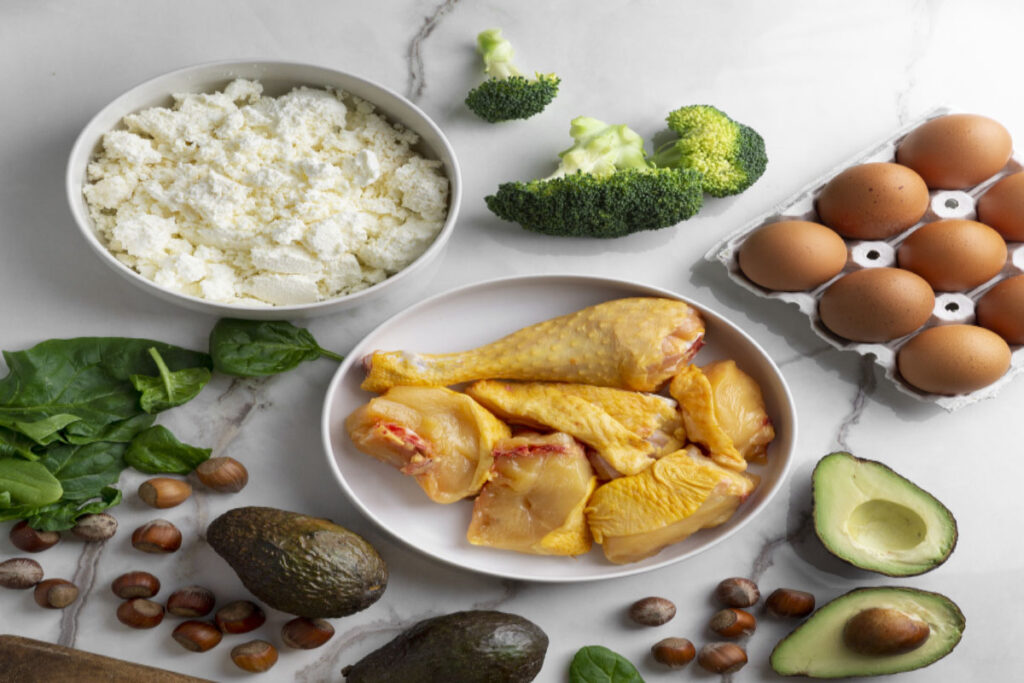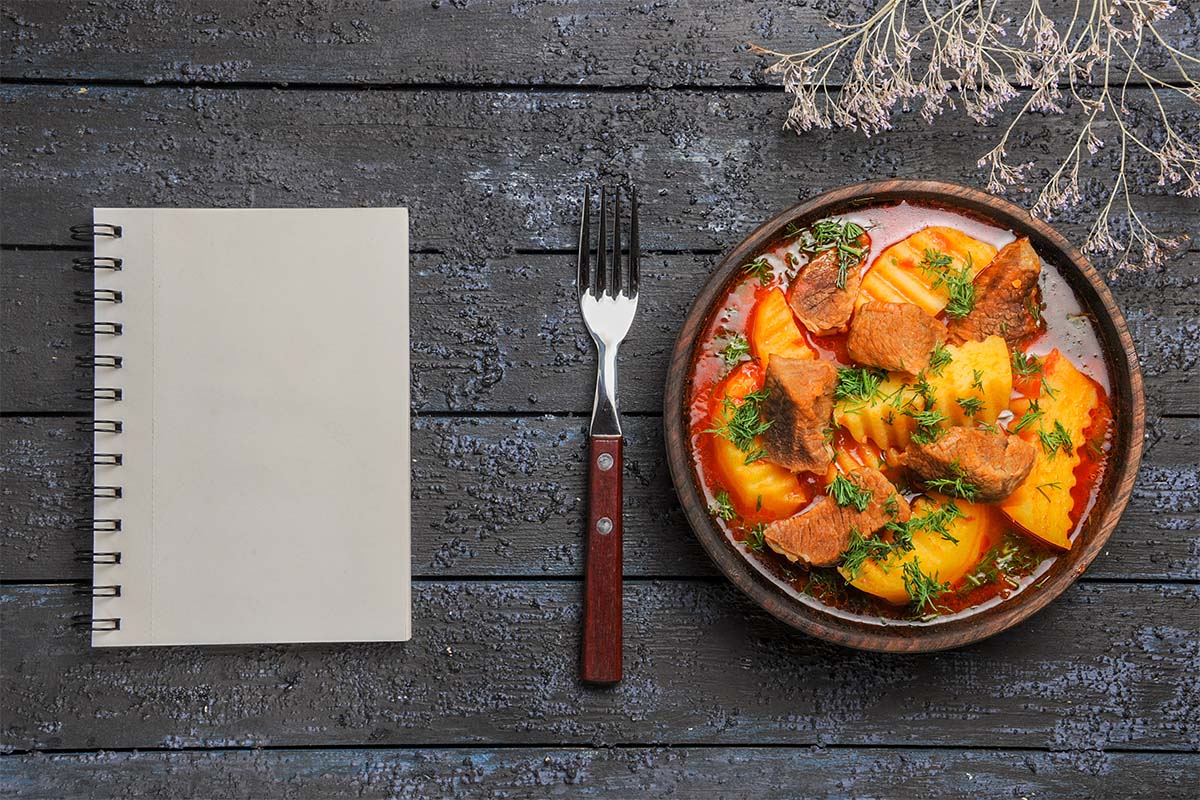Introduction to Nutritional Insights of Chicken Cobbler
Ah, the Low-Carb Chicken Cobbler—the dish that might have you questioning, “Is it a dessert?” But, oh, it’s so much more. Imagine the comfort of a chicken pot pie. Now, reimagine it with fewer carbs. It combines seamlessly with a topping that’s light and fluffy. Almost cloud-like, thanks to a golden biscuit crust. Yet, it has a low-carb twist. This dish stands out as a culinary chameleon. It fits effortlessly into weeknight dinners, special gatherings, or those moments when your soul yearns for comforting food. All the while, it keeps your carb intake in check.
The allure of this Low-Carb Chicken Cobbler doesn’t just lie in its delightful taste. It’s also in its simplicity and health-conscious approach. The recipe uses ingredients like rotisserie chicken, frozen vegetables, and a low-carb biscuit mix. This sends an open invitation. It welcomes both seasoned chefs and culinary novices alike. It offers a perfect way to enjoy comfort food without the guilt. Plus, it serves as an exceptional way to repurpose leftovers. This makes it a win-win for both taste and economy.
The Viral Sensation Behind Chicken Cobbler
Ever wonder why chicken cobbler has become such a talk of the town? Well, let’s just say it didn’t merely stumble into the limelight; it strutted in with all the confidence of a dish destined to be loved. Born from a simple yet ingenious idea, it captured the hearts and stomachs of millions, blossoming into a cherished recipe celebrated for its ease and deliciousness. It’s the type of dish that gathers people around the table, basking in the joy of cooking and sharing something that’s effortlessly remarkable.
Whether you’ve been caught up in the buzz or have just discovered this culinary gem, you’re in for a treat! You’re about to set off on a flavorful journey, delving into a recipe rich in taste and soaked in the warmth of home-cooked meals. Let’s dive into the world of chicken cobbler, where simplicity dances with indulgence, unveiling how you can bring this viral sensation right into your kitchen.
In our exploration, we’ll not just stick to the basics; we’ll also touch upon how to calculate the carbohydrates in chicken cobbler, ensuring that this delightful dish finds its place in your balanced diet. So, grab your apron, and let’s get started on this culinary adventure, shall we?
The Basics of Carbohydrates
Before we dive into the crusty depths of chicken cobbler, let’s take a moment to understand what we’re really talking about when we mention carbohydrates. Carbs, in their essence, are a source of energy found in many foods and come in various forms, each playing a unique role in our diet.
What Are Carbohydrates?
Carbohydrates are one of the three macronutrients (alongside proteins and fats) that provide the body with energy. They’re found in a wide range of both healthy and less healthy foods, from leafy greens to sugary snacks.
Types of Carbohydrates
- Simple Carbohydrates: These are your sugars. Quick to digest, they can spike your blood sugar levels, giving you a rapid energy boost followed by a crash. They’re found in fruits (as fructose) and milk (as lactose), as well as in refined sugars like table sugar.
- Complex Carbohydrates: These include starches and fibers, taking longer to digest, which provides a more sustained energy release. You’ll find them in vegetables, whole grains, and legumes.
Role of Carbohydrates in Diet
Carbs are crucial for fueling the brain and body, especially during physical activity. They’re also vital for intestinal health and waste elimination, thanks to dietary fiber. Balancing the right amount of carbohydrates in your diet can help maintain optimal health and energy levels.
Understanding the types and roles of carbohydrates sets the stage. This stage leads to diving into how many carbs are nestled within, the comforting embrace of a chicken cobbler. It’s about finding that sweet spot where indulgence meets healthful eating, ensuring every bite is as good for you as it tastes.
Analyzing Chicken Cobbler’s Ingredients
Chicken cobbler is a symphony of ingredients, each bringing its own nutritional profile to the table. Let’s break down the main components to shed light on where the carbs are coming from.

Key Ingredients in Low-Carb Chicken Cobbler
- Chicken: The star of the show, chicken is a high-protein, low-carb ingredient. The carb content here is virtually nonexistent, but it’s the foundation of our dish.
- Biscuit Mix: Here lies the crux of our carb investigation. Most biscuit mixes are flour-based, making them a significant source of carbohydrates. The exact count can vary based on the brand and serving size.
- Vegetables: Commonly used veggies like peas and carrots add not only color and flavor but also a modest amount of carbs. They’re also packed with vitamins and fiber.
Estimating Carbs Based on Ingredients
The carbohydrate content in chicken cobbler can fluctuate based on the recipe and portion size. However, by analyzing the ingredients, especially the biscuit mix and vegetables, we can get a ballpark figure. Homemade recipes allow for adjustments, such as using a low-carb biscuit mix or increasing the veggie ratio to tweak the carb count.
Now that we’ve dissected the main components, It’s time to look at how these ingredients come together in the dish. This examination reveals what that means for its overall carbohydrate content.
Calculating the Carbs
Calculating the carbs in a chicken cobbler requires a bit of math and some nutritional detective work. Here’s how you can get a rough estimate:
How to Calculate Carbs in Chicken Cobbler
- List Ingredients: Start by listing all the ingredients used in your chicken cobbler recipe.
- Check Nutrition Labels: For packaged items like biscuit mix, check the nutrition label for carbohydrate content per serving. For fresh ingredients, use a nutritional database.
- Do the Math: Add up the total carbs from all the ingredients and then divide by the number of servings the cobbler makes. This will give you carbs per serving.
Tools and Resources for Accurate Measurements
For those looking to get precise with their carb counting, there are tools and resources available to make the process easier:
- Nutritional Databases: Websites and apps like MyFitnessPal offer extensive databases to look up nutritional information for a wide array of ingredients.
- Food Scales: Measuring ingredients by weight rather than volume can provide a more accurate carb count.
Understanding the carb content in your chicken cobbler not only helps in managing dietary needs. It also empowers you to make informed decisions about the food you enjoy.
Carb Content in Chicken Cobbler
Understanding the carb content in chicken cobbler requires a closer look at the traditional recipe versus modified versions. On average, a serving of traditional chicken cobbler could contain between 30 to 50 grams of carbohydrates, primarily due to the biscuit topping and any added sugars or thickeners in the filling.
Understanding the Carb Content in Chicken Cobbler
- Homemade vs. Restaurant Versions: Homemade versions often allow for better control over ingredients, potentially lowering the carb count. Restaurant versions might be higher in carbs due to larger serving sizes and added ingredients for flavor.
- Modifications for Lower Carbs: By substituting the biscuit mix with a lower-carb alternative or reducing the amount used, the overall carb content can be significantly decreased.
Making a Low-Carb Chicken Cobbler
For those looking to enjoy chicken cobbler while maintaining a low-carb diet, there are several ways to modify the recipe without compromising on taste.
Tips for Reducing Carbs in Your Chicken Cobbler
- Alternative Low-Carb Chicken Cobbler Ingredients: Consider using almond flour or coconut flour in place of traditional biscuit mix. These alternatives offer fewer carbs and can add a unique flavor and texture to the topping.
- Recipe Modification Ideas: Increase the ratio of chicken and vegetables to decrease the overall carbohydrate density of the dish. Opting for low-carb vegetables like broccoli or spinach can also help.
FAQs
Let’s address some common questions related to the carb content in chicken cobbler and how it fits into various diets.
Frequently Asked Questions
- Can I make chicken cobbler keto-friendly? Yes, by using almond flour or coconut flour for the topping and ensuring the rest of the ingredients are low in carbs, you can enjoy a keto-friendly chicken cobbler.
- How does chicken cobbler fit into a balanced diet? When prepared with an eye on the carb content and portion size, chicken cobbler can fit into a balanced diet by providing protein, fiber, and essential nutrients.
- Are there gluten-free options for reducing carbs? Yes, gluten-free flour options like almond flour not only reduce the carb content but also cater to those with gluten sensitivities.
Conclusion
The journey through the world of chicken cobbler, from its comforting layers to the nitty-gritty of its carb content, reflects the balance between indulgence and mindful eating. By understanding the carbohydrates involved and exploring ways to tailor recipes to dietary needs, chicken cobbler can remain a beloved dish on your menu, regardless of your nutritional goals. Whether you’re aiming for a low-carb lifestyle or simply curious about the food you eat, the power lies in the knowledge and creativity of your cooking. So, go ahead, whip up that chicken cobbler with confidence, knowing that it can be as nutritious as it is delicious. After all, every bite is a step on the path to a healthier, happier you.
Low-Carb Chicken Cobbler Recipe
Ingredients:
- 2 lbs of cooked chicken breast, shredded
- 1 cup of almond flour
- 1/4 cup of coconut flour
- 1 teaspoon of baking powder (gluten-free)
- 1/2 cup of unsalted butter, melted
- 3/4 cup of heavy cream
- 1 egg
- 1 cup of mixed low-carb vegetables (e.g., broccoli, cauliflower, zucchini), chopped
- 1/2 teaspoon of garlic powder
- Salt and pepper to taste
- 2 cups of chicken broth (low sodium)
- 1/4 cup of cream cheese, softened
Directions:
- Preheat Oven: Start by preheating your oven to 375°F (190°C).
- Prepare the Filling: In a large skillet over medium heat, combine the chicken broth, cream cheese, and your choice of low-carb vegetables. Season with garlic powder, salt, and pepper. Stir until the mixture is well combined and the cream cheese is melted, creating a creamy sauce. Add the shredded chicken to the skillet, mix well, and then transfer the filling to a greased 9×13 inch baking dish.
- Make the Biscuit Topping: In a mixing bowl, whisk together almond flour, coconut flour, baking powder, and a pinch of salt. In a separate bowl, mix the melted butter, heavy cream, and egg. Combine the wet and dry ingredients until a dough forms.
- Assemble: Drop spoonfuls of the biscuit dough over the chicken filling in the baking dish, spreading it out to cover as much of the filling as possible.
- Bake: Place the dish in the oven and bake for 25-30 minutes, or until the topping is golden brown and the filling is bubbly.
- Serve: Let the cobbler cool for a few minutes before serving. This allows the filling to thicken slightly for the perfect consistency.
Chef’s Advice:
- Ingredient Quality: For the best flavor and texture, choose high-quality almond and coconut flours. These flours not only contribute to the low-carb count but also add a delightful nuttiness to the biscuit topping.
- Customization: Feel free to experiment with the vegetable mix based on your preferences or seasonal availability. Low-carb vegetables like spinach, mushrooms, or bell peppers also work well in this recipe.
- Serving Suggestion: Although this cobbler is a hearty dish on its own, serving it with a side of fresh green salad can add a refreshing contrast to the meal.
- Storage Tips: If you have leftovers, they can be stored in an airtight container in the refrigerator for up to 3 days. Reheat in the oven or microwave until thoroughly warmed.
By following these steps and tips, you can enjoy a delicious, comforting chicken cobbler that aligns with a low-carb dietary lifestyle. Happy cooking!

